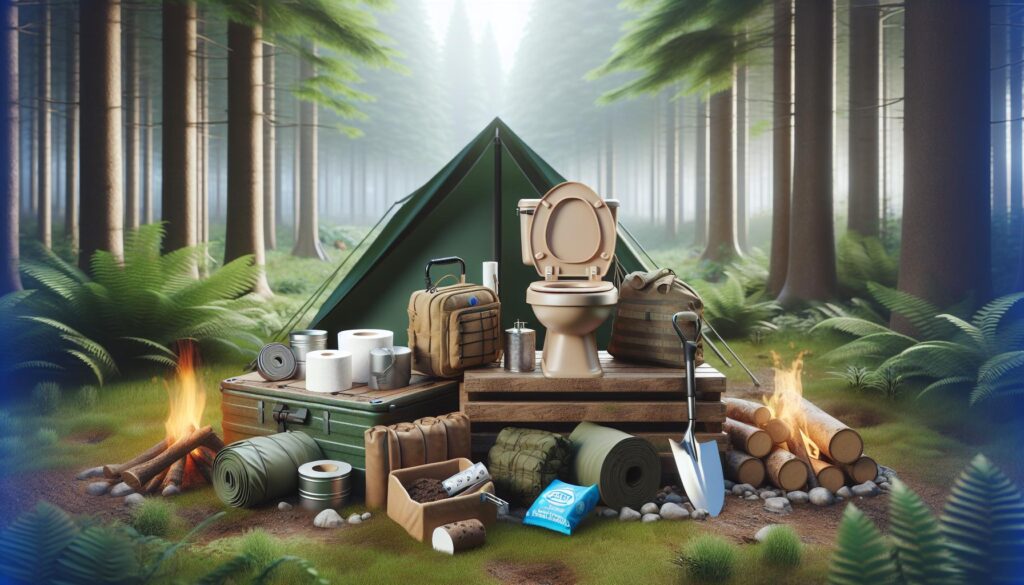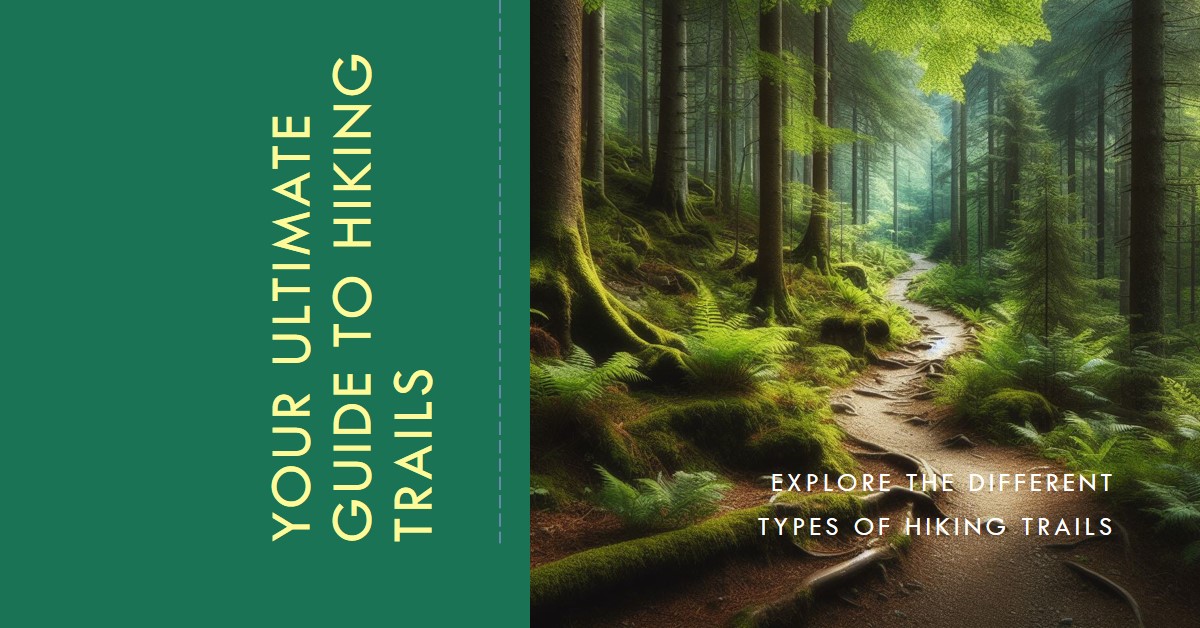Camping introduces us to the wonders of the great outdoors while testing our ingenuity in uniquely quirky ways. One question that’s critical yet often ignored is – where do we do our business when far from the comforts of modern plumbing? The solution lies somewhere between respect for nature, shared spaces, and human necessities. And that’s precisely what we’ll unravel in this guide to poop etiquette when camping.
A camping trip plucks us from the concrete urban jungles and nestles us in the lap of pristine nature. Amidst such tranquil settings, it becomes our responsibility to prioritize cleanliness and hygiene, both for our personal health and the preservation of the serene wilderness we temporarily call home. A crucial part of this is managing our natural bodily functions responsibly. It may not seem like the most glamorous facet of a camping adventure, but understanding how to poop while camping is essential.
This informative guide presents everything you need to know about pooping while camping. It not only allows for an enjoyable wilderness adventure but also ensures that your fun leaves no negative trace on the environment or the experience of your fellow campers. Therefore, without further ado, let’s delve deeper into the subtleties of handling waste management in the wilderness.
Table of Contents
Upholding Outdoor Sanitation: Why It’s So Important
Attainment of proper outdoor sanitation is utterly crucial for responsible camping. It promotes personal hygiene while safeguarding the pristine traits of natural surroundings that we venture out to experience.
Indispensably, when you’re camping, and nature calls, it is crucial to abide by the Leave No Trace principles. Utilize designated campsite toilets when you have access to them, and always respect the regulations set by the campsite or park management.
Furthermore, maintaining good hygiene in the wilderness is essential for disease prevention. Regularly washing your hands using biodegradable soap and water, or alternatively, using hand sanitizers, are effective steps to significantly lower the risk of illnesses.
| Key practices for wilderness hygiene: | Steps to minimize environmental impact: | Approaches to prevent disease spread: |
|---|---|---|
| Dispose waste conscientiously | Adhere to the Leave No Trace principles | Wash hands frequently with appropriate products |
| Opt for designated restroom facilities | Use biodegradable camping essentials | Always have hand sanitizers handy |
| Bury waste appropriately if required | Keep water sources clean and unspoiled | Use individual waste bags for personal hygiene |
To wrap it up, strict adherence to hygiene practices, conscious efforts to minimize environmental impact, and effective measures to prevent the spread of diseases are the backbone of proper outdoor sanitation. Employ these practices to ensure that everyone enjoys a clean wilderness experience and helps preserve our precious natural spaces.
Picking the Right Toilet Method
When it comes to pooping during your camping expedition, striking the perfect balance between comfort and being eco-conscious is vital. One prevalent method is digging a cathole. Although simple, it needs the right techniques and respect for certain regulations. This approach involves digging a hole in the ground, conducting your business, and then covering it up.
Alternatively, opting for a portable camping toilet caters to more sophisticated needs. These easy-to-setup, lightweight toilets come with waste disposal bags, offering a sanitary and nice-smelling solution.
If you’re after a hassle-free and simple solution, considering the choice of a wag bag or a personal portable toilet could suit you best. These packable systems include waste collection bags, which can be dispatched of correctly, making them perfect for situations where digging a cathole is either not possible or permitted.
The Art of Digging A Cathole
When camping, appropriate disposal of human waste by digging a cathole is a commonly adopted practice; it’s crucial for conserving nature and reducing potential environmental impact. However, the location of your cathole is crucial. Choose an area no less than 200 feet away from water bodies and campsites, and avoid areas of ecological sensitivity, such as wetlands or meadows.
Once you’ve pinpointed a location, commence digging your cathole. Ensure it’s about 6 to 8 inches deep and 4 to 6 inches in diameter. This facilitates decomposition and deters wildlife from unburying the waste. A modest trowel or a sturdy stick are the preferred tools.
Post-use, it’s important to cover the cathole completely and make it inconspicuous to prevent accidental discovery or disruption. The area should appear as undisturbed as possible to ensure other campers or hikers don’t unwittingly come across it.
Navigating the Portable Camping Toilet Experience
Adding a portable camping toilet to your camping gear can dramatically enhance your outdoor experience. Options come in a variety, encompassing flush toilets, bucket toilets, and even composting toilets. Each variation offers unique benefits, so carefully factor in your specific needs and preferences.
When deciding on a suitable model, consider its size and weight vis-á-vis your camping setup. If you’re backpacking or have limited space, a smaller, lighter option could be ideal. Also, consider how many folk will be using it and how frequently it’ll need emptying.
It’s also vital to more than just set-up your portable camping toilet, but also keep it tidy. Abide by the manufacturer’s instruction for assembly and use. Regular sanitation and appropriate disposal of waste are pivotal for maintaining hygiene and managing odor. When packing for your trip, don’t forget to include biodegradable waste bags or unscented cat litter to assist with waste management.
Grappling with a Wag Bag or Personal Travel Toilets
For those seeking a versatile solution, a Wag Bag or Personal Travel Toilet offers a compelling option. Their function and philosophy are crucial to maintain hygiene standards and reduce environmental impact while camping.
These portable amenities offer standout convenience and hygiene. They enable you to take care of your necessities discreetly without polluting the surroundings. A hallmark of these systems is how they are designed to contain and seal waste securely, thus reducing odors and minimizing the risk of contamination.
However, proper disposal of waste from a Wag Bag or a personal travel toilet remains essential for preserving the environment. These systems typically feature detailed instructions on waste disposal to ensure we minimize our impact on the ecosystem. By following these instructions and correctly disposing of waste, we contribute to protecting our environment and keeping our camping sites in their natural, beautiful state.
Environment-Friendly Toilet Paper Alternatives and Responsible Waste Management
When the wilderness becomes your temporary abode, managing waste, particularly from toileting, efficiently becomes vital. At times, you might find yourself without toilet papers on a camping trip. But fear not! Nature itself offers many biodegradable options like leaves, arming yourself with which will come in handy when in a pinch. Just ensure any such materials are safe to use and degrade easily & naturally.
Meanwhile, another approach to responsible pooping while camping entails packing out your waste. This requires the utilization of a portable toilet or a waste management system optimized for convenient transportation and disposal. The key here is to contain the waste in air-tight bags before disposing of them at dedicated waste dispositions points. Following this method alongside abiding by the Leave No Trace principles can majorly contribute to maintaining sanitation while minimizing our footprint on nature’s turf.
Additional Aspects of Outdoor Sanitation to Keep in Mind
Outdoor sanitation carries a lot of importance for wilderness explorers, more so if you’re spending multiple days camping. Knowing how and where to relieve oneself is critical for an environmentally conscious and enjoyable camping experience.
Camping presents an ultimate chance to improve one’s relationship with nature, and proper sanitation is a huge part of that process. Handwashing remains vital even outdoors. Always keep a biodegradable soap in your kit for washing hands properly before and after using the restroom. Also, pay keen attention to etiquette when answering nature’s call:
- Keep a respectable distance from both your camping spot and water sources to avoid contamination.
- Use a trowel or a designated camp shovel to dig a small hole.
- Make sure to cover the hole properly and respectfully, leaving no trace behind once you’re done.
- Store used toilet paper properly, either burying or packing it out as required.
- Choose a hidden spot for privacy and respect the privacy of other campers.
- Stay updated and adhere to local regulations around waste disposal.
By committing to responsible outdoor sanitation practices, you contribute to conserving the natural aesthetics of the wilderness while controlling the spread of bacteria and harmful substances.
Addressing Common Queries On Camping and Pooping
How Should I Dispose Of Waste While Camping?
When camping, ensure to leave minimum impact on the environment by following responsible waste disposal methods. Dig a hole at least 200 feet away from water sources and campsites and cover it completely with dirt post-use. Biodegradable toilet paper is a great choice to minimize the environment footprint. For feminine hygiene essentials and diapers, it’s best to pack them out.
Are Wet Wipes A Camping-friendly Option For Personal Hygiene?
While it may seem like a handy option, wet wipes are typically not environmentally-friendly as most are non-biodegradable and can leave a negative impact on the surroundings. A better route for personal hygiene while camping is using biodegradable toilet paper along with eco-friendly soaps and a small towel for cleaning.
What Alternatives Are There To Traditional Toilets While Camping?
When you’re out amidst nature, traditional toilets might not always be available. But, various alternatives can come to your rescue. Some campsites come equipped with vault toilets, but you can also consider portable camping toilets. These not only offer a touch of familiarity but also afford privacy. Lastly, you can always turn to a classic camping option like a camping shovel and dig a hole for waste disposal.
Are There Guidelines For Toilet Paper Disposal While Camping?
Yes, indeed. It is crucial to note that when disposing of toilet paper while camping, using biodegradable options and covering it completely with dirt is the greenest way to go. Burning the toilet paper is a serious no-no as it poses environmental hazards and can spark fires.
Final Thoughts
So, the next time you embark on a camping trip, remember to prepare for sanitation needs in advance. Your choice can range from the most primitive methods like using leaves instead of toilet paper, using designated facilities at a campgrounds, or going all-out with portable toilets. Regardless of your choice, the principles of responsibility, respect for nature, and hygiene need to overshadow everything else. Happy Camping!
Figuring Out Forest Functions: An In-Depth Guide on Where to Poop While Camping
When the call of nature strikes amid the enchanting embrace of the great outdoors, finding an appropriate place to answer it can feel like venturing into unexplored territory. However, when it comes to wilderness sanitation, showing respect for the environment and your fellow campers is paramount. So, how does one navigate this essential yet often overlooked aspect of camping? Let’s explore.
Knowing Your Nature Calls: Outdoor Sanitation Essentials
When the wild is your washroom, there are a few key points to remember. Proper disposal of waste is critical to preserve the environment and ensure a pleasant camping experience for everyone. So, choose a spot that’s at least 200 feet away from your camp and water sources, use a camping shovel to dig a hole for your business, bury your waste, and substitute regular toilet paper with biodegradable alternatives when possible. Opt for organic, biodegradable soaps and cleaning products for personal hygiene. Even small steps towards sustainability can help maintain the pristine status of the wilderness for years to come.
Beating the Bushes: Best Practices for Outdoor Hygiene & Waste Management
Observe these best practices to ensure your camping adventure brings no harm to the environment:
- Stay over 200 feet away from water sources and campsites for your “bathroom” spot.
- Use a camping shovel or a trowel to dig a hole.
- Bury your waste and covering it completely with soil.
- Always cover up disposable toilet paper. Avoid burning – it’s both unsafe and harmful to the environment.
- If personal materials like feminine hygiene products are used, haul them out of the wilderness in a sealed bag. The motto of any camper should always be “Leave No Trace”.
- When performing your wilderness wash-up, use eco-friendly, biodegradable soap, and avoid washing up in natural water bodies.
- Remember to stay respectful to fellow campers by choosing a discrete spot away from the common areas.
- Stay informed about the local regulations on waste disposal and ensure adherence.
Freaking Out about FAQS: Handling Hygiene & Sanitation While Camping
Unsure about how to manage your toilet needs and hygiene while camping? Here are some helpful answers to common queries:
What are the guidelines to follow when disposing of waste while camping?
When camping, it’s paramount to follow proper waste disposal methods to lessen environmental impact. It’s advisable to dig a hole at least 200 feet away from water sources, roads, and camping sites for your waste. Use biodegradable toilet paper and remember to bury it in the same hole. When it comes to solid waste, ensure full coverage with dirt as exposed waste can attract wildlife. Place used sanitary products in a bag and dispose of them once you’ve left the camping area.
Can you use wet wipes for personal hygiene while camping?
While wet wipes might seem like an ideal solution for on-the-go hygiene, most of them are non-biodegradable and can harm the environment. It’s safer and more eco-friendly to use biodegradable toilet paper and a combination of organic, travel-sized, biodegradable soap and a small travel towel for cleaning.
What are the alternatives to traditional toilets while camping?
There are several alternatives available for traditional toilets while camping. Some campgrounds provide vault toilets, simple structures with a pit for waste collection, or a container that is periodically emptied. There are also portable camping toilets designed for outdoor use that offer a level of comfort and privacy. Lastly, many campers prefer to use a designated camping shovel to dig a hole, effectively creating their own temporary forest toilet.
Are there specific guidelines for disposing of toilet paper while camping?
Yes. It’s just as important to properly dispose of your toilet paper after use. If you use biodegradable toilet paper, you can bury it along with your waste. However, ensure it’s entirely covered with dirt. Burning toilet paper is a fire hazard and isn’t eco-friendly.
Wrapping Up
When it comes to answering nature’s call in the wild, being mindful of the environment and those around you will ensure that you have a responsible and enjoyable camping experience. Remember, the aim of camping is not just to immerse yourself in the wilderness but also to preserve its pristine beauty for future generations to enjoy. Happy camping!














